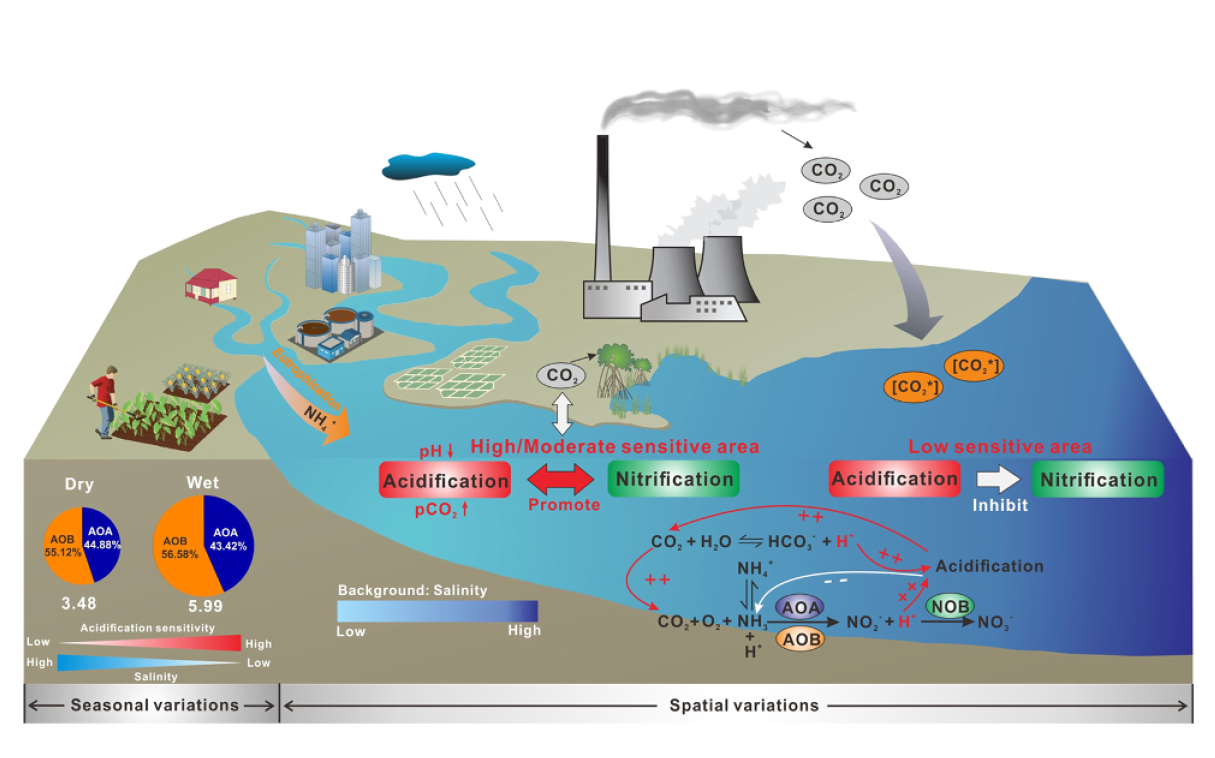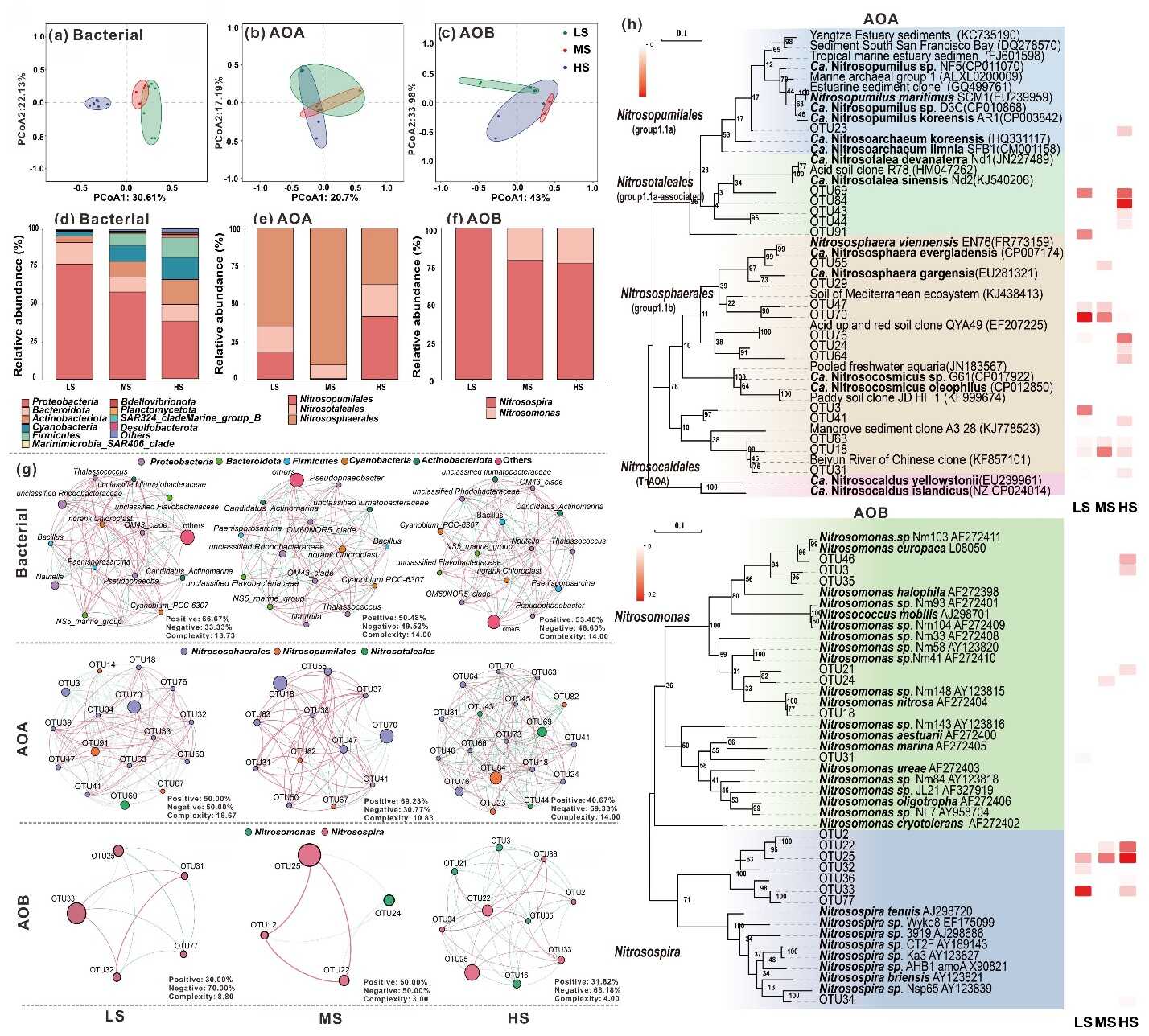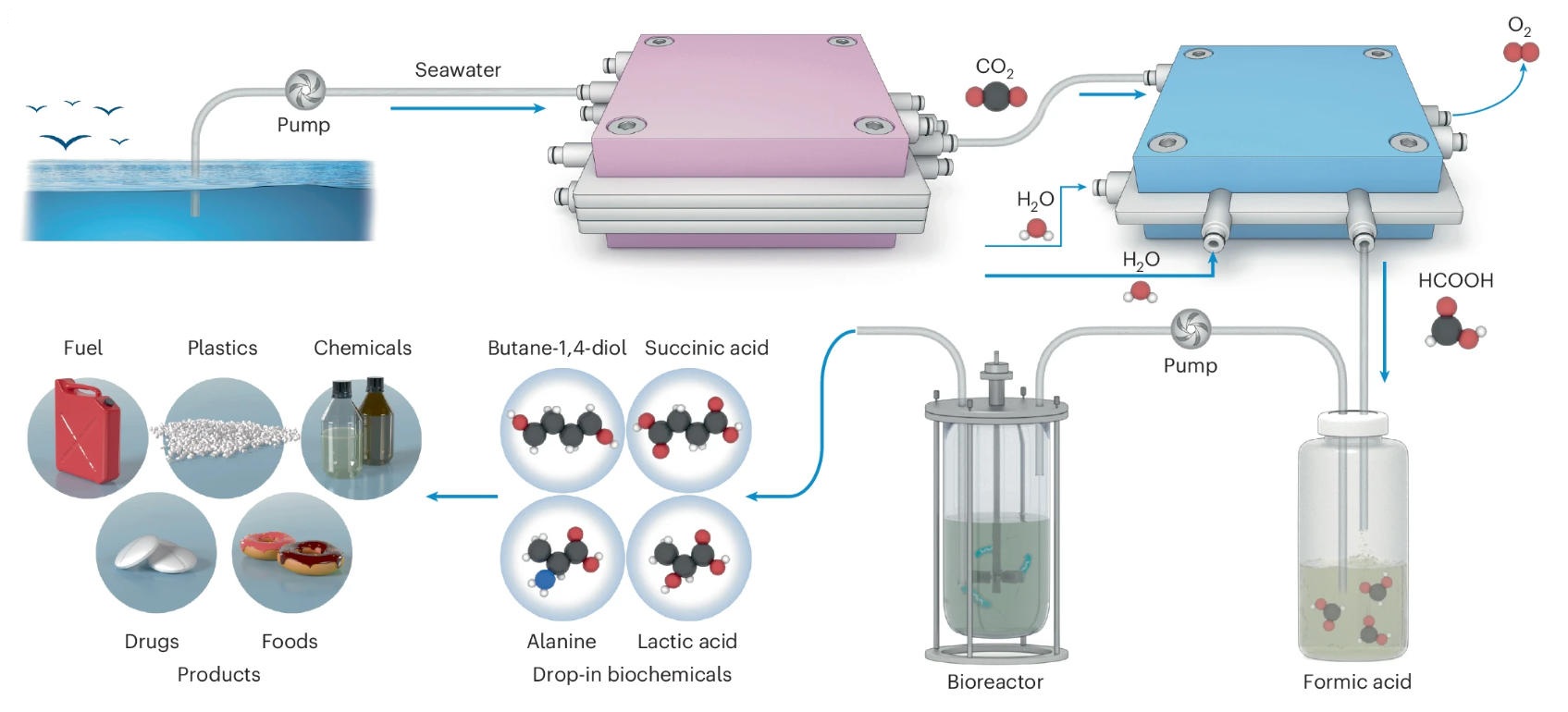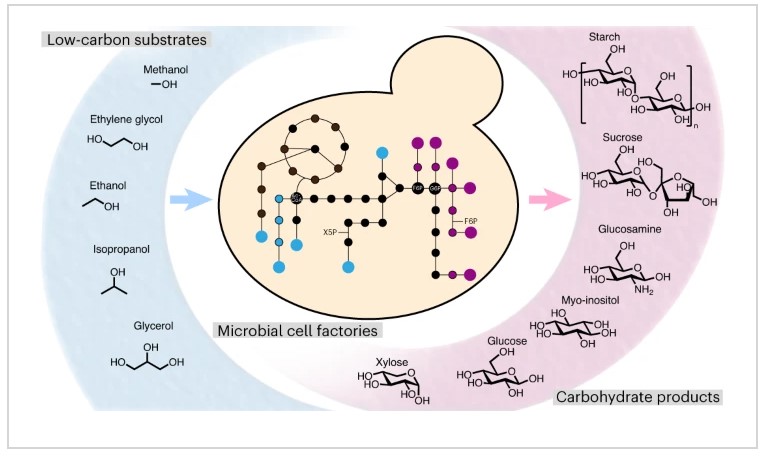
Scientists Reveals "Source-Sink" Mechanisms and Ecological Drivers of Carbon Sequestration in the Greater Bay Area
The coastal ecosystems of the Guangdong-Hong Kong-Macao Greater Bay Area (GBA) faces pressure from high-intensity anthropogenic activities, making the high-resolution scientific assessment of its carbon storage capacity and sequestration efficiency a matter of significant strategic and practical value.
Recently, a research team led by Associate Researcher YAO Hongming and Senior Engineer ZHU Ming from the Center for Optoelectronic Technology at the Shenzhen Institutes of Advanced Technology (SIAT), Chinese Academy of Sciences, revealed the spatiotemporal distribution of carbon "source-sink" patterns and their biogeochemical driving mechanisms in the GBA (Pearl River Estuary), constituting a "scientific diagnosis report" on the region's estuarine carbon cycle.
The research findings have been published in the high-impact journals Water Research and Limnology and Oceanography Letters.
Estuarine ecosystems play a pivotal role in the global carbon cycle, yet face mounting pressures from the concurrent challenges of eutrophication and acidification. Leveraging high-resolution underway observations (5-meter spatial resolution) and comprehensive multi-parameter biogeochemical sampling from the Greater Bay Area (GBA) Blue Carbon Monitoring Platform, the research team systematically characterized carbon flux dynamics in the Lingdingyang Estuary—the core aquatic zone of the GBA. This investigation elucidated the microscopic mechanisms underlying carbon cycle "leakage" in the Pearl River Estuary, providing the first empirical evidence of synergistic "acidification-nitrification" coupling driven by eutrophication.
Contrary to conventional assumptions of uniform carbon source or sink behavior, the study revealed the estuary functions as a "spatially partitioned carbon processor" sculpted by river-ocean interactions. The upstream river-influenced zone serves as a substantial CO2 source, with peak efflux rates reaching 291.6 mmol C·m-2·d-1 during flood periods. Conversely, the downstream ocean-influenced zone transitions to a CO₂ sink, where net autotrophic processes reduce fluxes to -48.6 mmol C·m-2·d-1.
This source-to-sink transition manifests at a critical spatial threshold approximately 40 km downstream from the river mouth, reflecting the integrated regulatory influence of hydrological mixing dynamics and nutrient utilization efficiency. Moreover, the GBA blue carbon system exhibits pronounced seasonal variability—flood season carbon fluxes substantially exceed those during the dry season, with enhanced terrestrial inputs serving as the primary regulatory mechanism for carbon release.
Despite substantial carbon fixation through phytoplankton photosynthesis, the study documented that 40–60% of fixed carbon is rapidly remineralized to the atmosphere via heterotrophic respiration. This "production-consumption coupling" creates a carbon recycling loop that significantly diminishes the net carbon sequestration capacity of the estuarine ecosystem. These findings suggest that carbon sink assessments relying solely on chlorophyll concentrations or satellite-derived proxies may systematically overestimate actual sequestration rates.
Under chronic eutrophic conditions, the Pearl River Estuary experiences acidification rates markedly exceeding those of open ocean waters. The investigation identified a pronounced acidification-nitrification coupling hotspot in the mid-Lingdingyang region, spatially coincident with the 40 km source-sink transition zone. Within this hotspot, ammonia-oxidizing microorganisms metabolize ammonium as substrate during nitrification, releasing protons that deplete alkalinity and depress pH, thereby generating a localized acidification center.
In summary, the research provides microscale mechanistic insight into declining carbon sequestration efficiency in GBA waters and elucidates a novel scientific framework for developing eutrophication mitigation strategies and enhancing regional carbon sink capacity.

GBA Blue Carbon Monitoring Platform and self-developed sensors. (Image by SIAT)

High-resolution based carbon “source-sink” and gross primary production patterns in GBA. (Image by SIAT)

Air-water CO2 flux and the main driving factors along salinity bins in GBA. (Image by SIAT)

Schematic plot of coupling effect between ocean acidification and eutrophication in GBA. (Image by SIAT)

Co-occurrence network analysis of nitrification-related bacterial communities in GBA . (Image by SIAT)
File Download:

